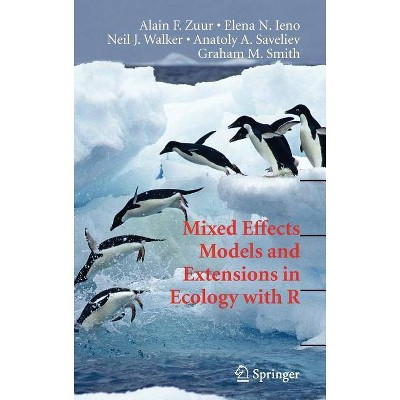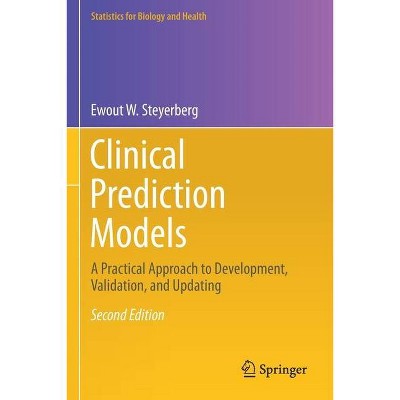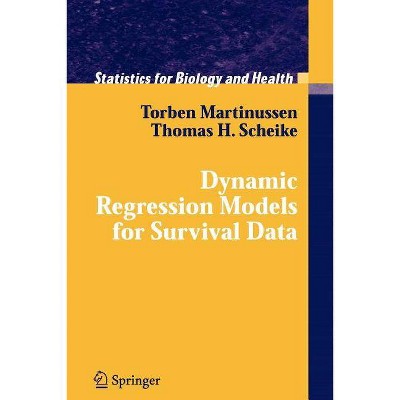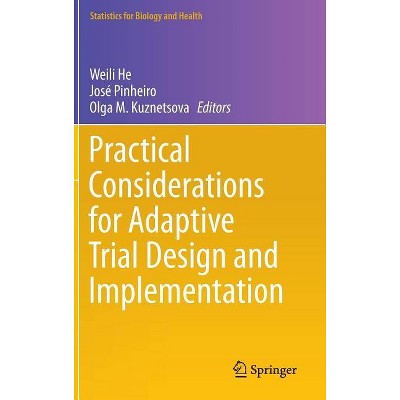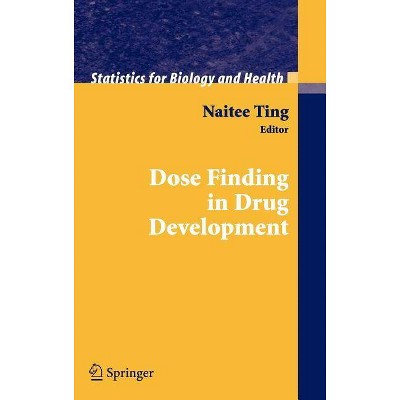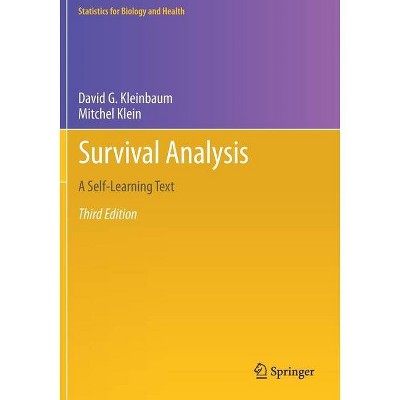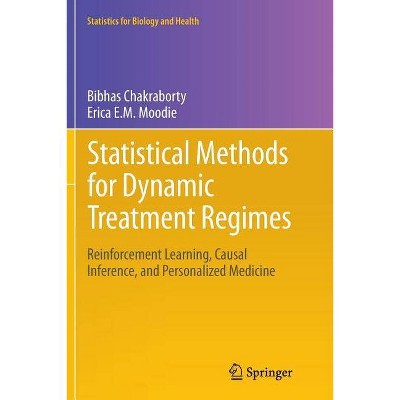Mixed Effects Models and Extensions in Ecology with R - (Statistics for Biology and Health) (Paperback)
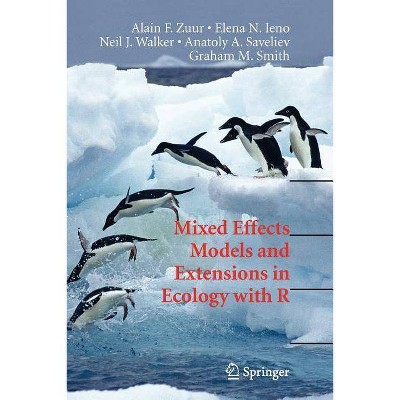
Similar Products
Products of same category from the store
AllProduct info
<p/><br></br><p><b> About the Book </b></p></br></br><p>Building on their previous book on the subject, the authors provide an expanded introduction to using Regression to analyze ecological data. As with the earlier book, real data sets from postgraduate ecological studies or research projects are used throughout.</p><p/><br></br><p><b> Book Synopsis </b></p></br></br>This book discusses advanced statistical methods that can be used to analyse ecological data. Most environmental collected data are measured repeatedly over time, or space and this requires the use of GLMM or GAMM methods. The book starts by revising regression, additive modelling, GAM and GLM, and then discusses dealing with spatial or temporal dependencies and nested data.<p/><br></br><p><b> From the Back Cover </b></p></br></br><p>Building on the successful <em>Analysing Ecological Data</em> (2007) by Zuur, Ieno and Smith, the authors now provide an expanded introduction to using regression and its extensions in analysing ecological data. As with the earlier book, real data sets from postgraduate ecological studies or research projects are used throughout. The first part of the book is a largely non-mathematical introduction to linear mixed effects modelling, GLM and GAM, zero inflated models, GEE, GLMM and GAMM. The second part provides ten case studies that range from koalas to deep sea research. These chapters provide an invaluable insight into analysing complex ecological datasets, including comparisons of different approaches to the same problem. By matching ecological questions and data structure to a case study, these chapters provide an excellent starting point to analysing your own data. Data and R code from all chapters are available from www.highstat.com.</p> <p>Alain F. Zuur is senior statistician and director of Highland Statistics Ltd., a statistical consultancy company based in the UK. He has taught statistics to more than 5000 ecologists. He is honorary research fellow in the School of Biological Sciences, Oceanlab, at the University of Aberdeen, UK.</p> <p>Elena N. Ieno is senior marine biologist and co-director at Highland Statistics Ltd. She has been involved in guiding PhD students on the design and analysis of ecological data. She is honorary research fellow in the School of Biological Sciences, Oceanlab, at the University of Aberdeen, UK.</p> <p>Neil J. Walker works as biostatistician for the Central Science Laboratory (an executive agency of DEFRA) and is based at the Woodchester Park research unit in Gloucestershire, South-West England. His work involves him in a number of environmental and wildlife biology projects.</p> <p>Anatoly A. Saveliev is a professor at the Geography and Ecology Faculty at Kazan State University, Russian Federation, where he teaches GIS and statistics. He also provides consultancy in statistics, GIS & Remote Sensing, spatial modelling and software development in these areas.</p> <p>Graham M. Smith is a director of AEVRM Ltd, an environmental consultancy in the UK and the course director for the MSc in ecological impact assessment at Bath Spa University in the UK.</p><p/><br></br><p><b> Review Quotes </b></p></br></br><br><p>From the reviews: </p> <p>"For many people dealing with statistics is like jumping into ice-cold water. This metaphor is depicted by the cover of this book ... . full of excellent example code and for most graphs and analyses the code is printed and explained in detail. ... Each example finishes with ... valuable information for a person new to a technique. In summary, I highly recommend the book to anyone who is familiar with basic statistics ... who wants to expand his/her statistical knowledge to analyse ecological data." (Bernd Gruber, <i>Basic and Applied Ecology</i>, Vol. 10, 2009)</p><p>"This book is written in a very approachable conversational style. The additional focus on the heuristics of the process rather than just a rote recital of theory and equations is commendable. This type of approach helps the reader get behind the 'why' of what's being done rather than blindly follow a simple list of rules.... In short, this text is good for researchers with at least a little familiarity with the basic concepts of modeling and who want some solid stop-by-stop guidance with examples on how common ecological modeling tasks are accomplished using R." (Aaron Christ, <i>Journal of Statistical Software</i>, November 2009, Vol. 32)</p><p>"The authors succeed in explaining complex extensions of regression in largely nonmathematical terms and clearly present appropriate R code for each analysis. A major strength of the text is that instead of relying on idealized datasets ... the authors use data from consulting projects or dissertation research to expose issues associated with 'real' data. ... The book is well written and accessible ... . the volume should be a useful reference for advanced graduate students, postdoctoral researchers, and experienced professionals working in the biological sciences." (Paul E. Bourdeau, The Quarterly Review of Biology, Vol. 84, December, 2009)</p><p>"This is a companion volume to Analyzing Ecology Data by the same authors. ...It extends the previous work by looking at more complex general and generalized linear models involving mixed effects or heterogeneity in variances. It is aimed at statistically sophisticated readers who have a good understanding of multiple regression models... .The pedagogical style is informal... . The authors are pragmatists--they use combinations of informal graphical approaches, formal hypothesis testing, and information-theoretical model selection methods when analyzing data. ...Advanced graduate students in ecology or ecologists with several years of experience with 'messy' data would find this book useful. ...Statisticians would find this book interesting for the nice explorations of many of the issues with messy data. This book would be (very) suitable for a graduate course on statistical consulting--indeed, students would learn a great deal about the use of sophisticated statistical models in ecology! ...I very much liked this book (and also the previous volume). I enjoyed the nontechnical presentations of the complex ideas and their emphasis that a good analysis uses 'simple statistical methods wherever possible, but doesn't use them simplistically.'" (Biometrics, Summer 2009, 65, 992-993)</p><p>"This book is a great introduction to a wide variety of regression models. ... This text examines how to fit many alternative models using the statistical package R. ... The text is a valuable reference ... . A large number of real datasets are used as examples. Discussion on which model to use and the large number of recent references make the book useful for self study ... ." (David J. Olive, Technometrics, Vol. 52 (4), November, 2010)</p><br>
Price History
Price Archive shows prices from various stores, lets you see history and find the cheapest. There is no actual sale on the website. For all support, inquiry and suggestion messages communication@pricearchive.us
